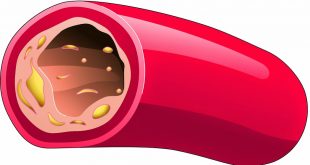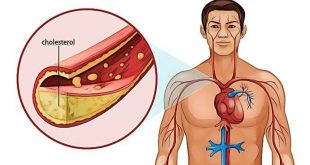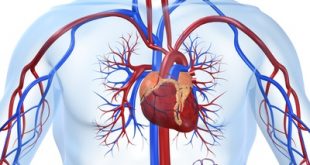What Is Postural Hypotension?
Postural hypotension occurs when there is a sudden drop in blood pressure when there is a change in a person’s posture from lying to standing.
When this occurs, you may feel giddy and in some cases, leading to fainting episode. This may occur straight after the change of posture, or it may be delayed for up to 5 to 10 minutes after the change of posture.
What Are The Causes Of Postural Hypotension?
Postural hypotension may occur for several reasons. This problem may occur in:
- Your body is dry. This may occur if you have not taken enough water, pass out too much of urine or if you lose significant amount of blood. People at risk are:
- During high grade fever. You may lose excessive body fluid through sweat.
- Elderly have decrease sensation of thirst. Therefore they may not seek to drink enough water even when the body is dehydrated.
- People who are taking medications which increases the amount of urine production.
- Children who have moderate to severe diarrhea.
- People with weak heart.
- People with disease that affects their nerves and/or hormone which regulates the blood vessel tones
- If you are taking certain medications like blood pressure medication, medication for prostate and medication that increases your urine production.
- People with diseases that affects the control of postural blood pressure such as diabetes and Parkinson’s disease.
- People who are otherwise healthy may also have the problem of postural hypotension. Older people, due to normal physiological changes in the body may be more at risk than younger people.
What Will You Feel During The Episode Of Postural Hypotension?
When you sit up or stand up from lying position, you may feel the following symptoms:
Feeling giddy or lightheaded
Blurring or dimming of vision
Generalized body weakness
Near fainting episode
Fainting (syncope)
Complication: What May Happen If I Leave The Condition Untreated?
The feeling of giddiness may interfere with your quality of life.
Fainting episodes may lead to fall and complications from fall:
- Minor injuries to muscle and skin
- Bone fracture
- Bleeding in the brain (more likely in older people or people who are on medications that interfere with blood clotting mechanism: ie. antiplatelets and anticoagulants)
Should I Seek Medical Advice?
Yes! If you feel giddy or passing out when you stand up, you should see a nurse or doctor.
What Test Should I Expect When I See A Doctor?
Most of the time, the diagnosis and cause of the postural hypotension can be reached with detail history obtained from you. Therefore, accurate description of the events you feel (before, during and after) should be related to your doctor.
There are some basic tests that may be required:
- Measurement of blood pressure and pulse while you are sitting or lying down. Measurement is then repeated after you change your posture to standing. The standing blood pressure may be repeated at 3 minutes, 5 minutes and 10 minutes if the initial reading did not show a drop in blood pressure.
- Blood test to check for red blood cell count. Significant loss of blood may cause postural hypotension.
- Blood test to check for chemical balance in your body.
In some specific cases, a more detail test like test to check heart function may be required.
What Can I Do At Home?
If you are people at risk (taking medication that lower your blood pressure, older age group), you should check your own blood pressure at home. This can be done with automatic blood pressure measuring equipment.
You should check the blood pressure on sitting and standing.
An abnormal reading means a drop of:
- 20 mmHg of the upper reading (systolic) and/or
- 10 mmHg of the lower reading (diastolic)
In doubt, always get medical advice from your doctor.
How Is Postural Hypotension Treated?
The initial step in treating the postural hypotension is to identify the cause(s) and treat the underlying problem.
- If you are taking blood pressure lowering medication(s), adjustment to the doses or switching the medication will be done for you. Medicines that may cause postural hypotension are anti hypertensive, medications for heart conditions, medications for depression and medications for prostate disease. Remember NOT to stop blood pressure medication abruptly on your own without first consulting your doctor.
- If you are having severe diarrhea or vomiting and you are unable to replace the ongoing fluid loss through drinking, you may need to be hospitalized. Fluid will be given directly into your body via the blood vessel (intravenous fluid).
Medications that treat postural hypotension directly are available. It will only be prescribed in specific conditions. Ask your doctor.
How Can I Prevent Or Reduce The Symptoms?
What Can I Do To Feel Better?
There are few things you can do own your own to reduce the symptoms of postural hypotension. Always discuss with your doctor first because certain causes of postural hypotension are treatable.
These are actions that you can take:
- When you stand up from sitting or lying, do it slowly to give your body enough time to adapt. This is especially important when you get out of bed in the morning because your body has adapted to the prolonged lying position.
- Then let your leg hang down from the side of the bed.
- Upon standing up, make sure there is something stable to hold onto in case you begin to feel giddy.
- Avoid strenuous activities that may lead to excessive sweating during hot weather.
- Drink enough water.
- Avoid drinking too much alcohol.
In more severe condition:
- Elevating the head of your bed may reduce the change in blood pressure when you stand up in the morning.
- Wearing compression stocking to help pump blood from your legs up to the body may help. (ask your doctor for a suitable device for you)
References
- Gibbons, C.H. & Freeman, R.(2006). Delayed orthostatic hypotension: a frequent cause of orthostatic intolerance. Neurology , 67, 28.
- Gupta, V. & Lipsitz, L.A. (2007). Orthostatic hypotension in the elderly: diagnosis and treatment. Am J Med,120,841.
- Kaufmann, H. (1996). Consensus statement on the definition of orthostatic hypotension, pure autonomic failure and multiple system atrophy. Clin Auton Res, 6, 125.
- Robertson, D. & Robertson, M.(1994). Causes of chronic orthostatic hypotension. Arch Intern Med,154,1620.
- Rutan, G.H., Hermanson, B., Bild, D.E., et al.(1992) Orthostatic hypotension in older adults. The Cardiovascular Health Study. Hypertension, 19, 508.
| Last Reviewed | : | 15 February 2013 |
| Writer | : | Dr. Cheah Wee Kooi |
| Translator | : | Dr. Cheah Wee Kooi |
| Accreditor | : | Dr. Lee Fatt Soon |
 PENDIDIKAN PESAKIT Kementerian Kesihatan Malaysia
PENDIDIKAN PESAKIT Kementerian Kesihatan Malaysia



